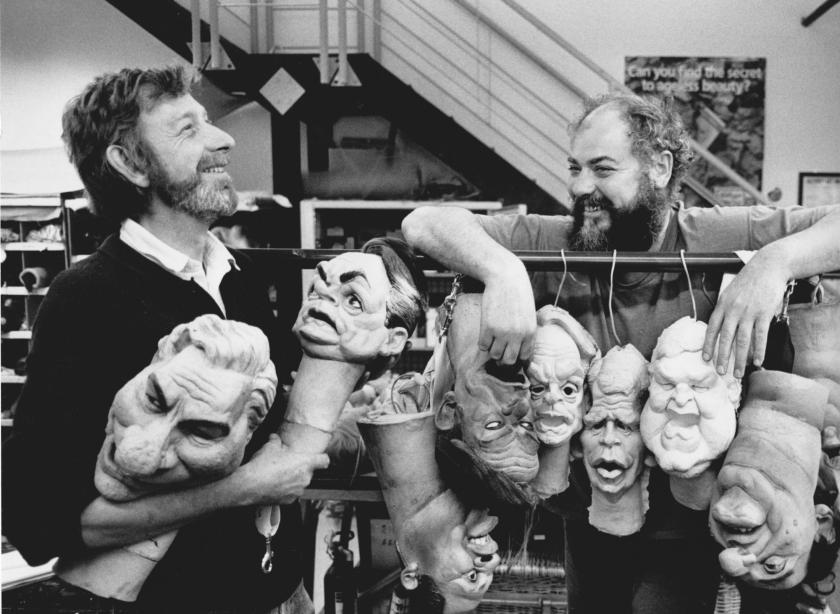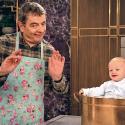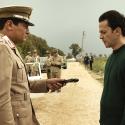“You can never embarrass politicians by giving them publicity.” Michael Heseltine’s verdict on Spitting Image – he claimed, of course, he never watched it – was surely one of the truer things said in last night's Arena memorial Whatever Happened to Spitting Image?, marking the 30th anniversary of the beginning of the satirical puppet show. It certainly seemed balanced when set alongside an apoplectic Ted Heath, who accused those behind it of being, basically, a bunch of jealous, irresponsible losers.
Antony Wall’s film did achieve a nice sense of balance about a programme that went from troubled beginnings to become, at its height, a television phenomenon watched by some 15 million people. It chose a sometimes slightly distracting picaresque manner in which to do it, complete with chapter-by-chapter narrative set, for no particular reason that I could discern, against the background of a train journey, interspersed with episodes from Spitting Image producer John Lloyd’s Desert Island Discs memories. There were also updates to the main players today, who all seemed to be doing very-nicely-thank-you in a number of attractive rural locations around the country.
it was a hugely expensive enterprise, costing at least as much as television drama
And it does now look like an unlikely combination to have come together, a lucky instance of the right people at the right time, even if it might not initially have seemed that way – Peter Fluck and Roger Law were from an art school background, Lloyd and others from an Oxbridge theatrical clique. The rows during production, which was spread inconveniently between London and Birmingham, and the initial lack of connect with technical staff who were more used to working on Crossroads meant it was a miracle it came together at all. For which a very healthy dose of credit should go to Charles Denton of Central Television, who gave the show full support – it was a hugely expensive enterprise, costing at least as much as television drama – and backed it even through initial development problems, of which there were many, because he believed in its healthy political disrespect. A commissioning editor, in short, the like of whom the Spitting Image team would be very lucky to find today: in fact, as one of them speculated, if it was coming around again now, it would be on the internet rather than the television screen, since no one would take the plunge.
 Others wondered whether there’s the same defining colour to be found in political figures today as was offered by the likes of Margaret Thatcher (pictured, right: © Spitting Image Archive 1989, photographer John Lawrence Jones) and her rottweiler sidekick, Norman Tebbit: it was disappearing even with their departure from the scene, with a young Steve Coogan musing on whether, after John Major took over at Downing Street, “people are more bland”. Not to mention that the whole political process has moved towards the corporate (“they can’t be found, they can’t be pointed as”, in the words of one of the film’s chapter titles). There really were no “untouchables” who couldn’t be assailed, certainly not the royal family. (No mention of them here, but as well as the French offshoot Les Guignols, Spitting Image also spawned a brilliant Russian version which was pulled after the election of Vladimir Putin as president: no mocking authority there).
Others wondered whether there’s the same defining colour to be found in political figures today as was offered by the likes of Margaret Thatcher (pictured, right: © Spitting Image Archive 1989, photographer John Lawrence Jones) and her rottweiler sidekick, Norman Tebbit: it was disappearing even with their departure from the scene, with a young Steve Coogan musing on whether, after John Major took over at Downing Street, “people are more bland”. Not to mention that the whole political process has moved towards the corporate (“they can’t be found, they can’t be pointed as”, in the words of one of the film’s chapter titles). There really were no “untouchables” who couldn’t be assailed, certainly not the royal family. (No mention of them here, but as well as the French offshoot Les Guignols, Spitting Image also spawned a brilliant Russian version which was pulled after the election of Vladimir Putin as president: no mocking authority there).
Whether it ever changed anything, or could have done, was a question no one was really answering in the film’s closing section, which took us to the programme’s 30th anniversary ceremony at the BFI last month. Up there on the platform with the creatives were two of their erstwhile targets, Roy Hattersley and David Steel, both clearly enjoying the experience. It was all veering a little towards the complacent, dressed in what John Lloyd described as the “warm clothes of nostalgia”. But at its best Spitting Image wielded the sharp scalpel of satire like little else before or since, and marked a generation – indeed, you could say it gave a whole generation a new connection to politics. A mean legacy, in every sense.















Add comment